Crabapple trees require minimal maintenance, look lovely in all seasons, have fragrant blossoms, and bear edible fruit depending on the variety. But, if you're thinking about adding one of these beauties to your landscape, you probably have lots of questions, including - how big does a crabapple tree get and how fast does it grow?
Large crabapple trees can grow up to a staggering 40 feet tall, but most average between 15 to 20 feet. Dwarf varieties grow between 5 to 10 feet tall. Some ornamental flowering crabapple trees grow up to 36 inches per year, while most cultivars have an average yearly growth rate of 12 to 24 inches.
Now that we've covered the basics of crabapple trees' growth rate, we'll look at some popular types of crabapples to help you choose which ones to add to your garden. Keep reading to learn more about each tree's characteristics and to find the answers to some common questions and concerns that you may have.
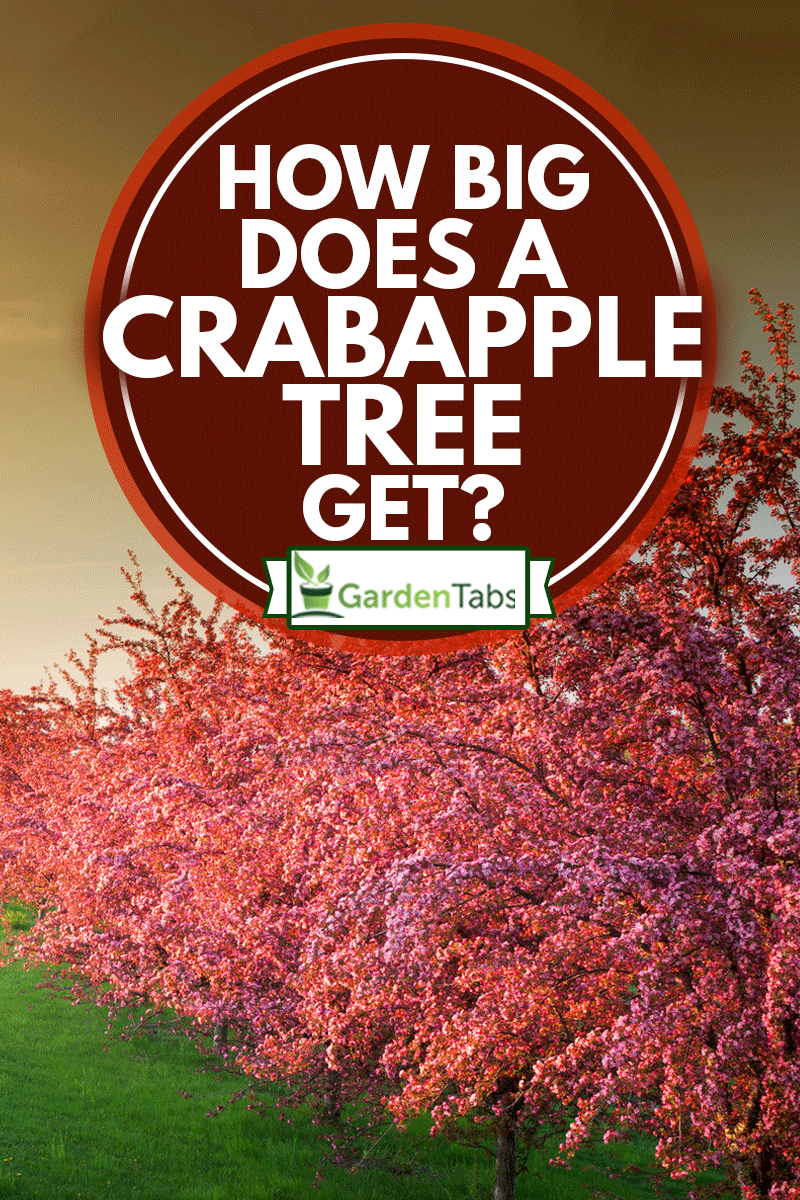
What Are Some Different Types Of Crabapple Trees and What Are Their Variations On Height And Growth?
Adams
The Adams crabapple tree has a robust round shape that blooms with bright pink flowers in mid-spring. This tree bears red fruit that lasts through the winter and thrives in zones 4-8. As tall as they are wide, Adams crabapple trees grow 20 feet high and 20 feet wide and have a rapid growth rate.
Adirondack
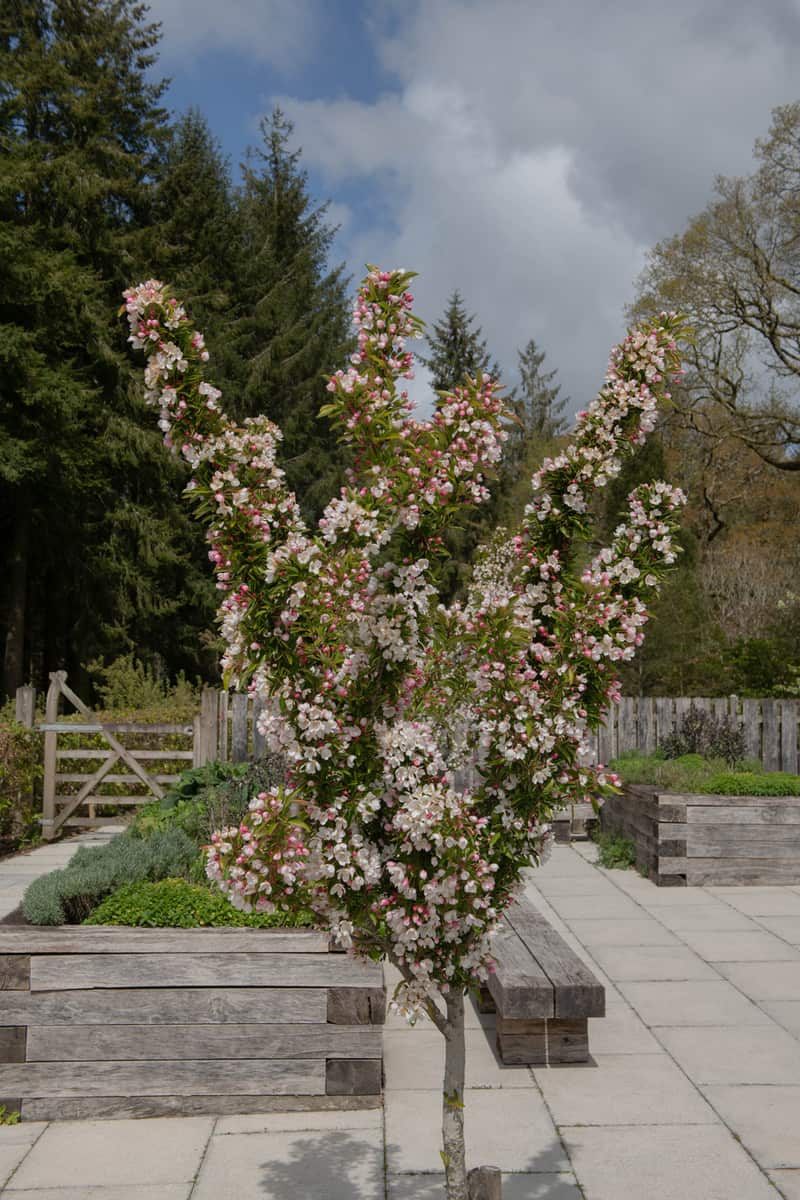
Adirondack crabapple trees are upright, compact, and densely flowered with white blooms. Adirondacks are an optimal choice for small spaces; they grow up to 18 feet tall and only 10 feet wide and grow fast. They produce red fruit that is resilient to disease and should be planted in zones 4-8.
Harvest Gold
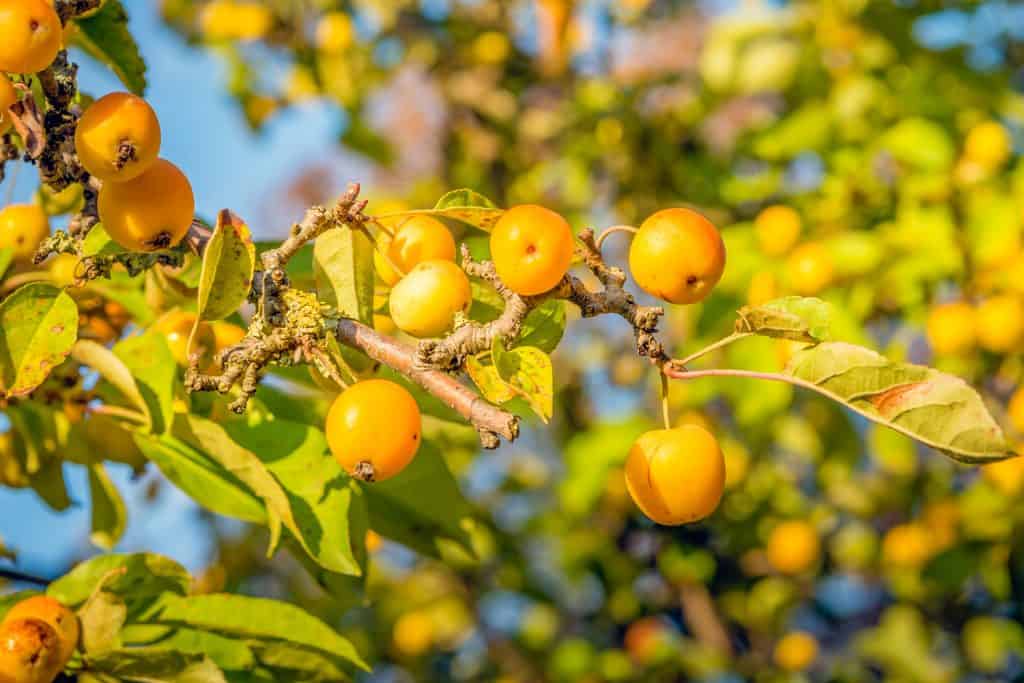
The harvest gold crabapple tree yields bright yellow fruit and grows 22 feet high and 18 feet wide with a moderate growth rate of 12-36 inches per year. Its upright oval shape has white flowers that bloom in the spring and thrive in zones 3-8. Harvest golds are also resistant to most crabapple tree diseases.
Louisa
The Louisa is a type of weeping crabapple tree that features beautiful pink blooms. Louisa's grow up to 10 feet tall and 12 feet wide and requires regular pruning for optimal beauty. Plant this moderately fast-growing tree in zones 4-8 for the best results.
Prairifire
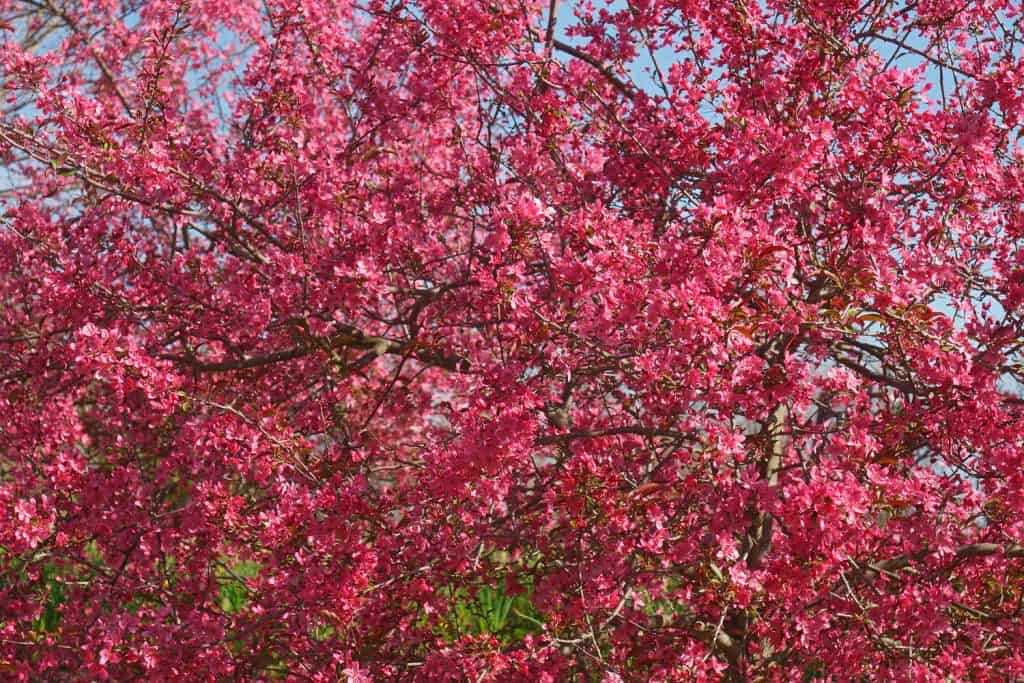
Prairifires are almost perfectly symmetrical at 20 feet high and 20 feet wide. They have a medium growth rate of 13-24 inches per year. Their reddish color foliage, fruit, and bark make for an attractive addition to your landscape and thrive in zones 4-8.
Red Jewel
Red jewels are profusely laden with bright, red fruits that persist through the spring. After the fruit falls off, the tree blossoms with white flowers; this type of crabapple tree is a good choice for small yards with its narrow form of 15 feet high and 12 feet wide and has a medium growth rate. Zones 4-8 are the optimal plant zones for red jewels.
What Is The Lifespan Of A Crabapple Tree?
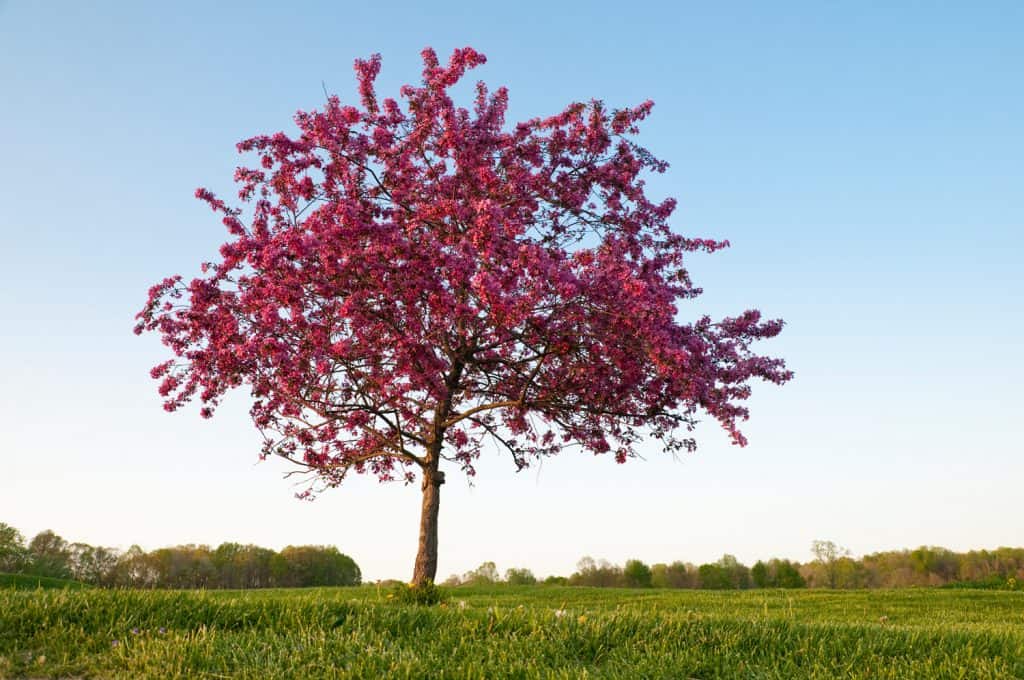
Crabapples have a relatively hearty lifespan of 30 to 70 years. Although crabapple trees are easy to maintain and flourish, some cultivars are prone to diseases like apple scab, fireblight, cedar-apple rust, and mildew. Some indicators to look for that your crabapple tree is about to perish are:
- Reduced foliage
- Cracking or flaking bark
- Fungus on the trunk or oozing sap
- A decline in flowering blooms
How Wide Do Crabapple Trees Get?
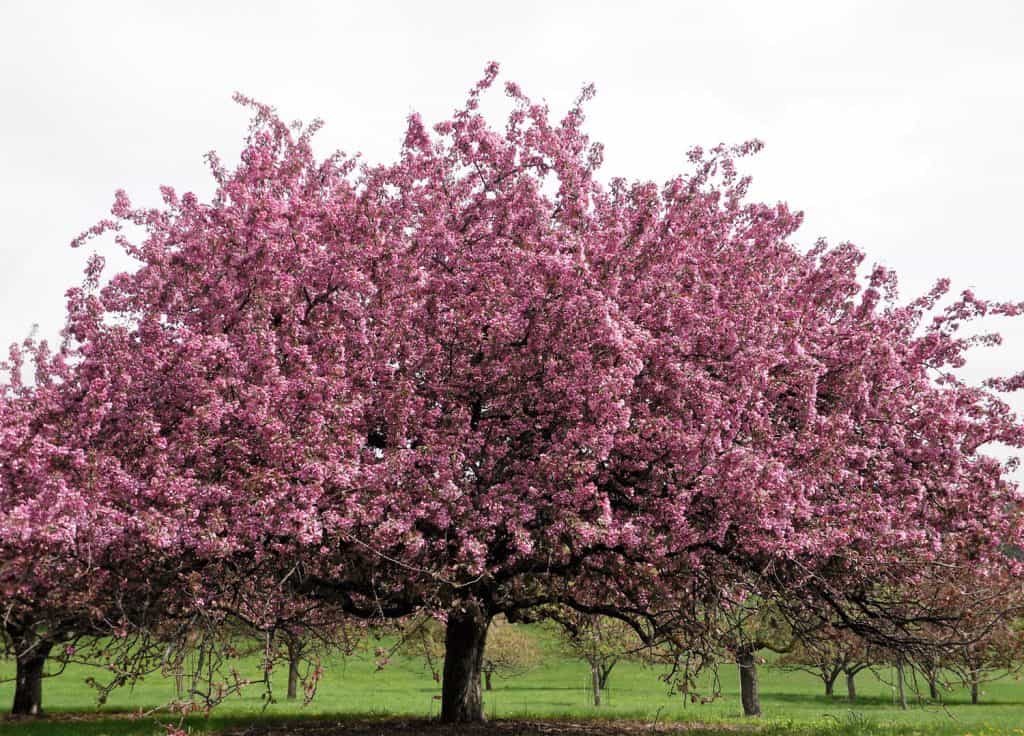
Crabapple trees come in an array of various widths to accommodate any yard space. One of the widest cultivars, the Dolgo, can grow up to 25 feet wide, while the petite Sargent Tina only grows to a mere 6 feet wide.
How Much Space Does A Crabapple Tree Need?
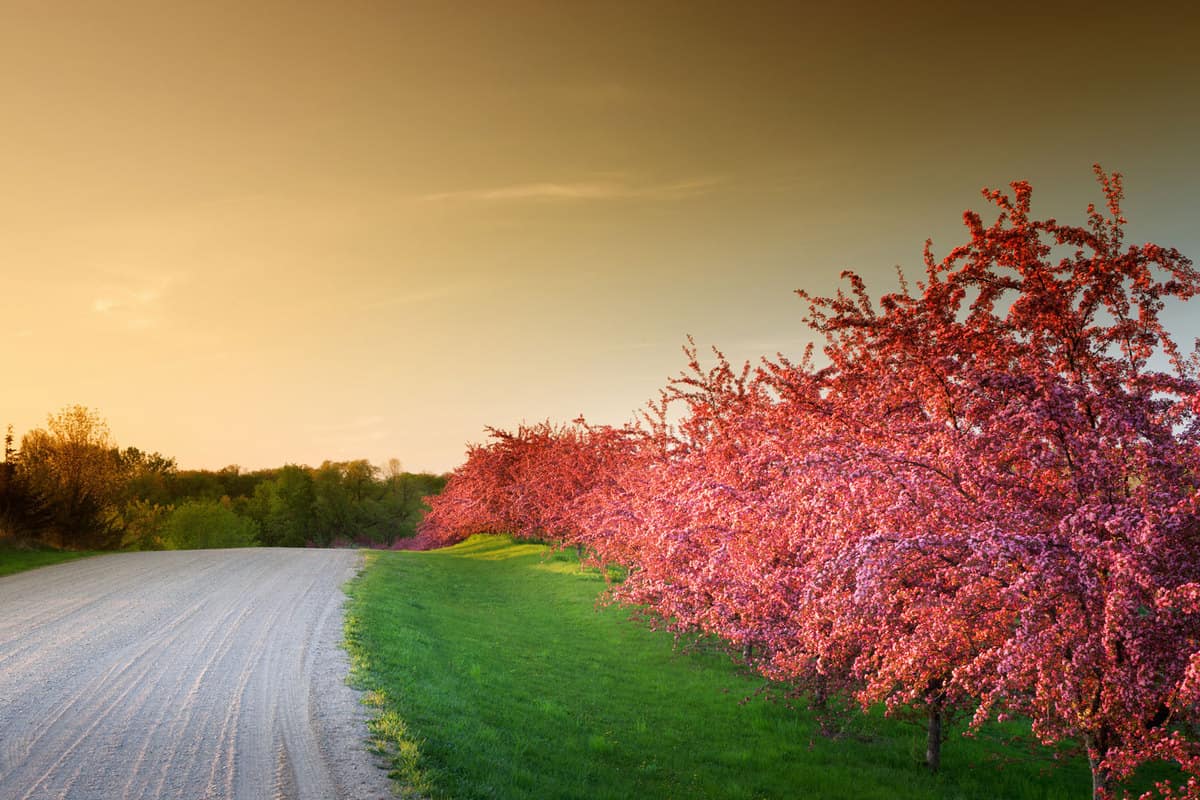
If you wish to group crabapple trees, it's best to space them 6 to 15 feet apart. Narrow crabapple cultivars such as the Red Barron and Raspberry Spear can be planted closer together, while wider varieties like the Dolgo and Purple Prince need more room to flourish.
How Big Do Lollipop Crabapple Trees Get?
Lollipop crabapple trees are round and almost entirely symmetrical. This moderately fast-growing dwarf variety reaches 10 feet high and 10 feet wide and is an excellent option for small yards, patios, and gardens. Lollipops have fragrant, white blooms in spring and grow golden fruit in the summertime. These slow-growing beauties are hardy in zones 4-8 and will need full sun to thrive.
How Big Do Dwarf Crabapple Trees Get?
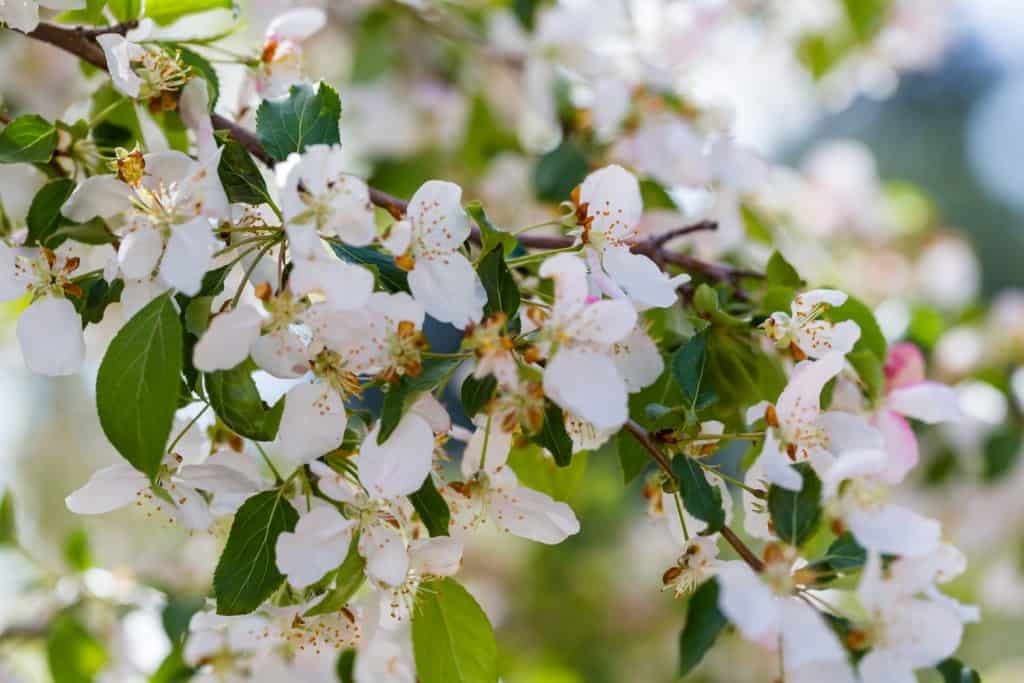
Dwarf crabapple trees vary somewhat in height and width, but they rarely grow over 10 feet high and 12 feet wide. Let's take a look at some different types of dwarf crabapple trees.
Firebird
Firebird crabapple trees grow at a slow rate to 8 feet tall and 10 feet wide. They have an abundance of red fruit that persists through the winter and white flowers in spring. Plant firebirds in growing zones 4-7 in full sunlight for optimal results.
Pink Princess
The Pink Princess dwarf crabapple tree has low, spreading branches. It grows to 8 feet tall and 12 feet wide at a slow growth rate. It has fragrant pink flowers and red-hued leaves and fruit. Plant these low maintenance, disease-resistant trees in zones 4-8 to attract birds and butterflies.
Royal Beauty
The Royal Beauty is a slow-growing weeping tree that grows 10 feet tall and 8 feet wide. They feature dark pink blooms, purple foliage, and red fruit. This cultivar is considered high-maintenance but makes for a lovely ornamental tree for your landscape. Hardiness zones are 3-8.
Sargent
Sargent crabapple trees have low, horizontally spreading branches. They are profusely laden with fragrant, white blossoms and red fruit. They grow 8 feet tall and 12 feet wide and look exceptionally lovely when planted in groups. The Sargent is disease-resistant and thrives in zones 4-8. They are slow-growing at a rate of fewer than 12 inches per year.
What Is The Smallest Crabapple Tree?
The most miniature crabapple tree cultivar is Sargent Tina. This dwarf tree has a rounded form that grows to only 5 feet tall and 6 feet wide and has a slow growth rate of less than one foot per year. They feature copious amounts of red buds that open to solitary, white flowers that mature to red fruit. Plant Sargent Tina in zones 4-8 in full sunlight for best results.
Can You Grow A Crabapple Tree In A Pot?
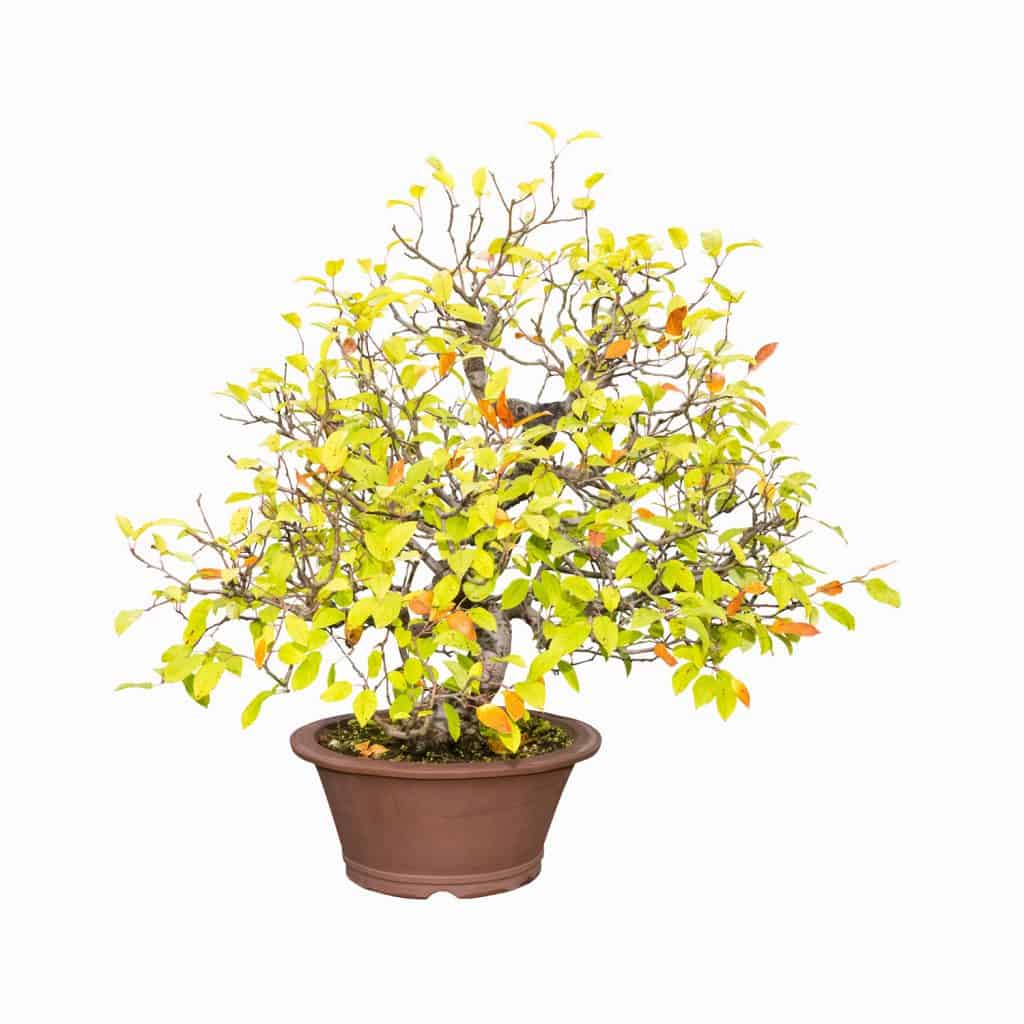
Smaller varieties of crabapple trees can successfully be grown in containers. Dwarf cultivars and other types that are around 12 feet tall can be housed in a large pot. When choosing a container for your tree, it's best to err on the side of caution and choose a bigger rather than smaller pot, no matter which cultivar you decide to plant.
Make sure that the pot has adequate drainage and that you place the tree in full sunlight.
Click here to see this tree planter pot on Amazon.
In Closing
By knowing how big crabapple trees get and how fast they grow, you'll be able to decide which one is right for your landscaping needs. Whether you choose to pick a dwarf cultivar or a large, showy tree, all crabapple trees add beauty and elegance to your yard, garden, or patio.
For more helpful gardening advice, be sure to read:

